The Kenyan Sand Boa (Eryx colubrinus) is a small burrowing snake native to north-eastern Africa.
Sand Boas are round stout snakes that are loved for their beauty, docile nature and small size.
They have a beautiful orange body with a dark brown blotching pattern similar to a dairy cow. These colorful snakes are truly unique in appearance.
Kenyan Sand Boas tolerate handling well, have simple husbandry needs and are not venomous so make fantastic pet snakes for beginners.
Continue reading to learn everything you need to know about this old world snake…
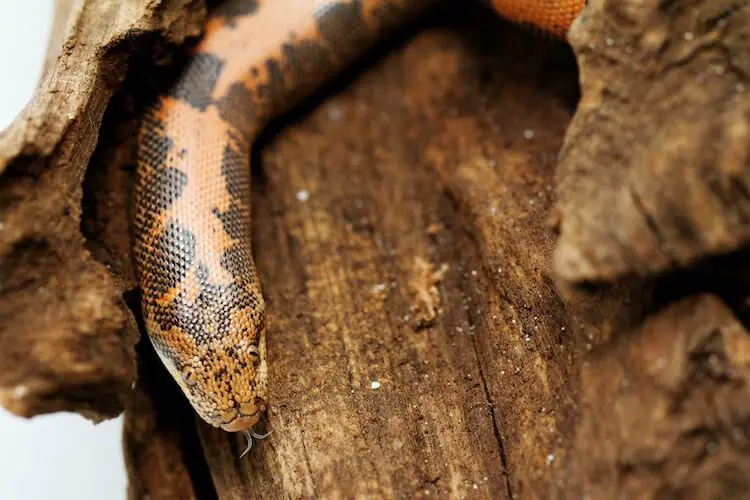
Kenyan Sand Boa Species Overview
The Kenyan Sand Boa is an old world snake with a range from Egypt to Niger and as far south as Kenya.
Historically there were two recognized subspecies of this snake:
- Eryx colubrinus colubrinus.
- Eryx colubrinus loveridgei.
The loveridgei subspecies was thought to occupy the southern range of Kenya and have more vibrant orange tones. This species separation is debated among Herpetologists.
Kenyan Sand Boas originate from north-eastern Africa and prefer to live in sandy savanna regions. This loose-soiled habitat gives them plenty of space to burrow in and being ambush predators they dart out of burrows to attack passing prey.
Sand Boas have small eyes to help stop sand from damaging their eyes and nostrils to help them breathe freely when waiting in burrows.
This species is adored by keepers for their docile nature, color pattern and small features. Their beady eyes and stubby tail make them a beautifully unique pet.
Kenyan Sand Boas remain small with females reaching around 2.5 feet in length and males 1.5 feet.
| Kenyan Sand Boa Facts | |
|---|---|
| Common Name | Egyptian Sand Boa, East African Sand Boa |
| Scientific Name | Gongylophis (Eryx) colubrinus |
| Price | $100 |
| Size | Males 15 – 18 inches Females 25 – 30 inches |
| Lifespan | 15 to 20 years |
| Diet | Mice |
| Tank Size | 20 or 30-gallon |
| Popular Alternatives | Rosy Boa, Western Hognose Snake, Corn Snake |
Kenyan Sand Boa Appearance
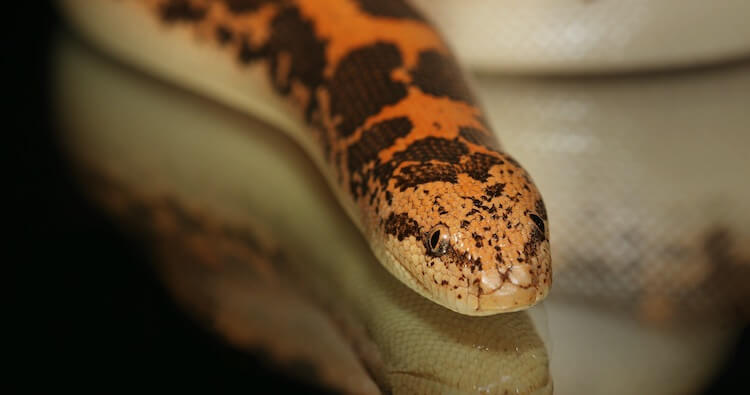
Many owners love Boas for their unique appearance – especially their small facial features.
Kenyan Sand Boas have unique patterns with bright base colors and rich spots. Usually they are bright yellow or orange with a dark brown blotching pattern similar to a dairy cow.
They are stout bodied and look perfectly circular in shape. This snake’s neck is one of their most unique features as their thick cylindrical bodies cause it to disappear.
Their thick body quickly tapers into a short stubby tail.
How Big Do Kenyan Sand Boas Get?
This snake remains small in size for their entire lifespan. Males typically reach a maximum size of 15 – 20 inches. Females reach at least that long though many are closer to 30 inches in length.
Babies are born at 8- 10 inches long and are immediately able to begin hunting.
Color Variations and Markings
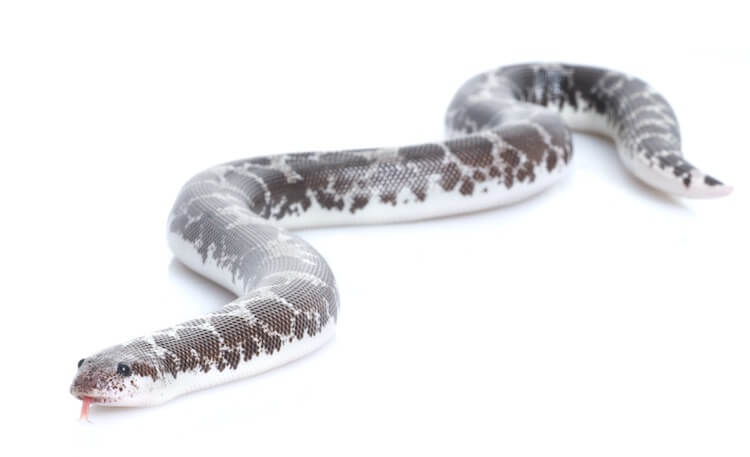
Many wild Sand Boas have yellow or orange base colors with dark blotching patterns.
There are now ten recognized morph variations as captive breeders have been able to produce a variety of patterns and color morphs.
The most popular morphs are albino and anerythristic (pictured above), however they can be expensive with prices ranging from $500 to over $1,500.
Kenyan Sand Boa Care Guide
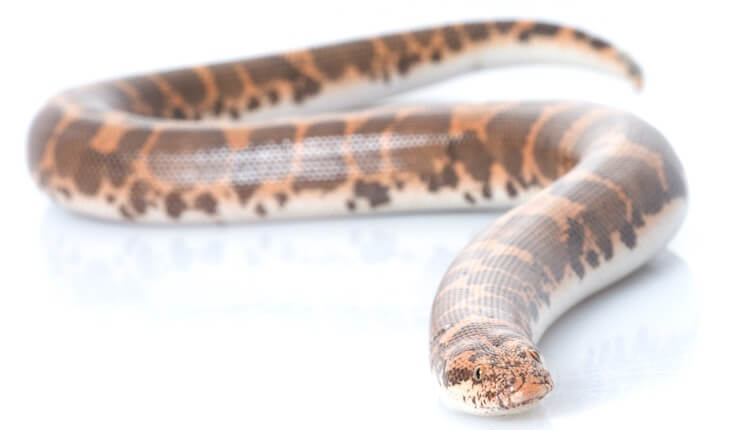
Feeding Guide
The Kenyan Sand Boa is an incredible hunter that is skilled at ambushing their prey.
These small carnivores will sit burrowed in the sand with only their heads exposed. At the right time they will shoot out of the burrow and attack passing rodents, birds or lizards.
Kenyan Sand Boas are constrictors so will usually squeeze their prey to subdue it. Occasionally they will drag their prey into a burrow to suffocate it.
Many pet snakes are fed in feeding bins or empty tubs. This prevents the snake from accidentally ingesting substrate or any pieces of decor.
For the Kenyan Sand Boa it is best to feed them in their enclosure to maximize mental enrichment. The behavioral enrichment that these snakes gain from practicing their ambush feeding behaviors is important to their wellbeing.
Here are a few steps to safely feed your snake frozen-thawed mice in their enclosure:
- Select a frozen mouse roughly the same diameter as your snake.
- Thaw the bagged rodent safely in a fridge overnight.
- Once thawed place the bagged mouse in warm water until its temperature is ~98°F.
- Dangle the mouse around the opening to your snake’s burrow using feeding tongs.
- When your snake strikes continue holding the mouse for a few seconds to make the snake “fight”.
- If the snake doesn’t strike leave the mouse in a clean area for up to two hours.
For juvenile Sand Boas under two years of age feed one mouse per week.
Adults are prone to obesity because of their stout shape so should only be fed one mouse every 10 – 14 days.
Health and Husbandry Tips
Kenyan Sand Boa illnesses are usually related to poor husbandry or diet.
Maintaining consistent husbandry practices will help to keep your pet Boa healthy and active. There are a few health issues that are common with pet snakes:
- Stuck shed/stuck eye caps.
- Rot (scale or mouth).
- Mites.
- Internal parasites.
Poor cage sanitation can lead to scale or mouth rot and respiratory infections.
It is important to clean their cage at least every four weeks. The water bowl should be cleaned and refilled daily.
In addition to looking after your Boa’s health you should think about the health of other reptiles they may come in contact with. When you purchase a new snake it is very important to establish a quarantine period.
This is done by creating a small enclosure to temporarily house your pet. During this time you should carefully observe their behavior and fecal habits.
Signs They Are Healthy
- Shedding well.
- Active and foraging/exploring.
- Regular feeding.
Sickness Symptoms
- Stuck shed or eye caps.
- Lethargic.
- Refusing food.
Kenyan Sand Boa Enclosure
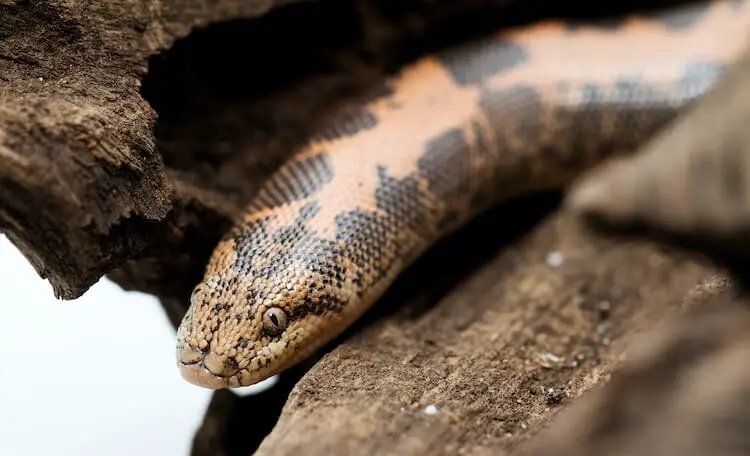
This species is native to a region in north-eastern Africa known as the Afrotropical ecoregion.
The Afrotropical ecosystem is a semi-arid environment with scrublands, grasslands and woodlands. There are also regions with vegetation scattered over sand dunes.
These different habitats can all provide a healthy environment for Boas as long as the substrate is loose.
The Afrotropical region of north-eastern Africa has a warm climate that should be replicated for this snake in their habitat for proper metabolism.
Tank Set Up
A baby Sand Boa needs a small 10-gallon enclosure. However, after they reach two years you should replace this smaller tank for a larger 20-gallon (males) or 30-gallon (females) as Sand Boas need plenty of space to burrow and forage.
Adding décor (e.g. plants, bark, rocks) to the enclosure will help your snake shed and feel secure.
- Tank Type: plastic or plexiglas cage.
- Tank Size: 20 or 30-gallon.
- Lighting: basking light.
- Substrate: sand/soil mix.
Long glass enclosures with screen tops are typically the best choice for this pet. Kenyan Sand Boas are burrowing snakes so a large enclosure for exploration is important.
If you choose a plastic enclosure then monitor your humidity closely. This snake comes from an arid environment so humidity should be kept between 30 – 40%. High humidity can lead to respiratory illnesses.
Heating and Temperature
Kenyan Sand Boas need an ambient temperature range of 75 – 80°F at all times.
This can usually be achieved by adding a low wattage heat emitter or deep heat projector connected to a thermostat. The thermostat should have a thermometer attachment on the cool side to make sure the ambient temperature never rises above 80°F.
The hot side of the tank should have a basking temperature of 90 – 95°F.
This is easily achieved using a daytime basking bulb. The basking bulb should only be used for 12 hours per day to establish a day-night cycle.
Sand Boas are more active during dawn and dusk so a day-night cycle is important for them.
Substrate Requirements
Kenyan Sand Boas are a burrowing reptile that feels safe when they are able to dive deep into their substrate. They are also ambush predators that rely on burrows to hunt.
Both of these behaviors should be encouraged in captivity.
The best substrate is either aspen or sand:
- Aspen will help to maintain a dry enclosure and makes burrowing easy.
- Sand (mixed with organic soil) is more natural and equally good for burrowing.
When using a sand soil mixture make sure it is primarily sand. Too much soil will lead to increased humidity.
Kenyan Sand Boa Temperament
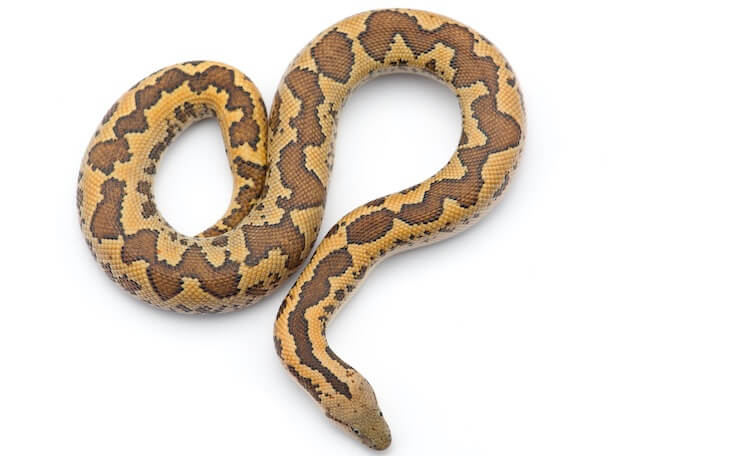
Sand Boas are crepuscular or nocturnal so are most active during dawn and dusk. The day tends to be unbearably hot for these small snakes so they spend most of their time buried in the sand.
During dawn and dusk they will often emerge from their burrows to explore. When hunting they will emerge slightly and wait for passing prey.
Kenyan Sand Boas are solitary in the wild unless breeding.
Some keepers have successfully cohabitated females, but there have been instances of cannibalism if the size difference is too much. For this reason cohabitation is typically discouraged.
They are not an aggressive snake and rarely bite. Boas will try their best to escape or quickly burrow away from threats.
For some first time keepers a hiding snake may not be that interesting but their docile nature makes them a great pet.
Do Kenyan Sand Boas Like To Be Held?
Sand Boas are known to tolerate handling and rarely bite their handler. However, if you approach their burrow directly some Boas have a strong feeding response and will strike.
It is important to give a snake time to adjust to their enclosure before handling. You should wait five days before attempting to handle.
You should start out slow and handle them once a day for several weeks.
The handling method you use will depend on your comfort level and your pet’s temperament:
- Pick it up – when your Boa is on the surface they will tolerate being gently picked up.
- Scoop it up – if you see your snake is under the sand then reach into the sand and scoop it into your hands. Make sure to avoid the burrow opening.
- Use a hook – if your snake has a very strong feeding response then gently move a hook into the sand until you can hook it under its belly. Gently lift your snake out of their burrow.
When handling remember that Boas stay near or under the ground. They are very clumsy climbers and will easily fall if their weight is not supported.
Kenyan Sand Boa Baby
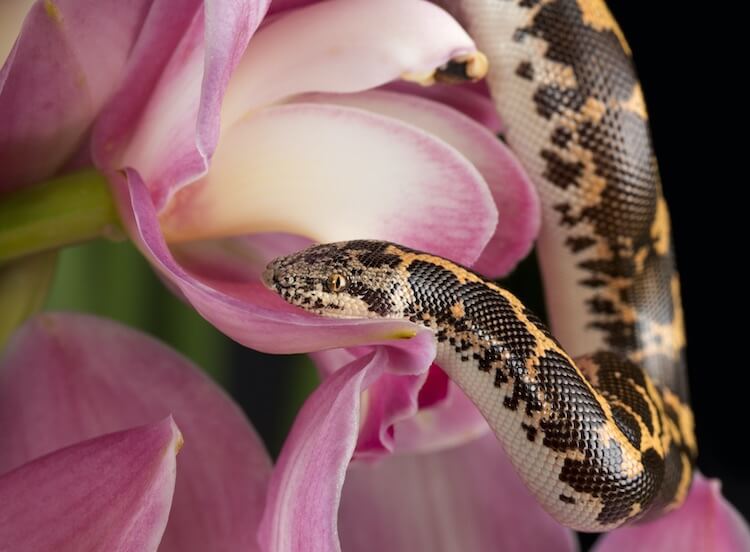
During winter and early spring males will find females in their burrows. After mating the female will spend 4 – 5 months carrying the embryos to full development.
She will birth anywhere from 6 – 20 live snakes.
Baby Kenyan Sand Boas are born alive but this can be misleading.
Sand Boas are ovoviviparous. This means that they form eggs but do not lay them. Towards the end of gestation the eggs will hatch and then live snakes are born.
Babies are born typically 8 – 10 inches long and will grow for between two to three years depending on gender. Males are full grown at two years and measure 14 – 16 inches. Females will not reach maturity until they are over two feet long which can take three years.
Buyer’s Guide
Almost all Kenyan Sand Boas in the United States are bred in captivity since exporting has largely ended. Always check with the breeder to make sure the snake isn’t wild caught.
Reputable breeders will be able to tell you the snake’s age, genetics (if a morph), their feeding routine, and important clutch information.
The breeder should also be knowledgeable about the species.
Sand Boas have a wide price range because of the number of morphs available.
Wild-type Kenyan Sand Boas are sold for $100 but morphs are more expensive. Depending on the rarity of the morph some can cost $1,500.
Summary
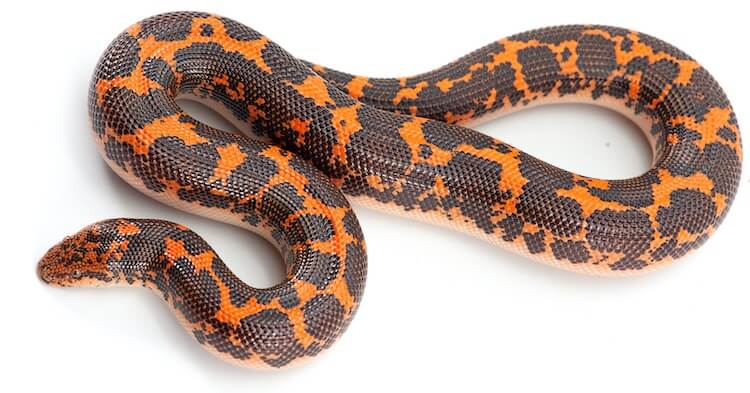
Kenyan Sand Boas are small, beautiful snakes with unique color patterns and hunting behaviors. It is fascinating to watch them ambush prey.
These stubby snakes have adorable tails and faces, short round bodies and rich spotting.
They are perfect for any beginner or seasoned herpetologist because they are great to handle and have simple care requirements.
However if you are not totally convinced there are other similar species to consider such as the Rosy Boas, Western Hognose or Corn Snake.
Has this stubby snake stolen your heart? Let us know in the comments below.

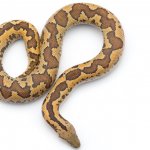
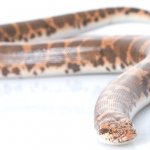
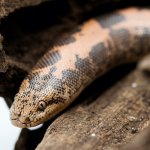
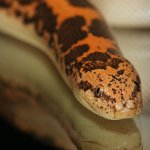
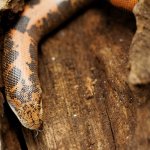
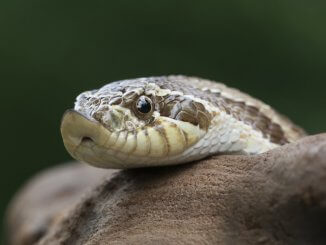
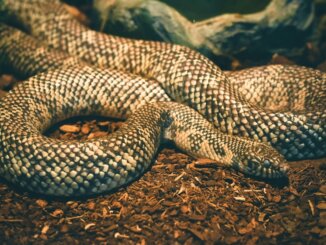
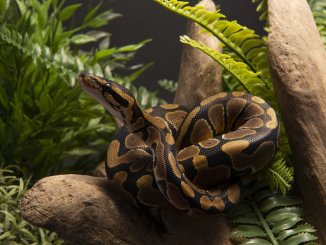
This is one of my dream snakes to have!!
I have one of these little guys, and he is SOOOO sweet! Such a cute little face!
Love my KSB. Wish there were more resources for detailed info.
i just got a 3 month old male sand boa today!so cute, but he has only been out of the sand once. he probably just needs to adjust but i hope he doesn’t spend all of his time hidden away!